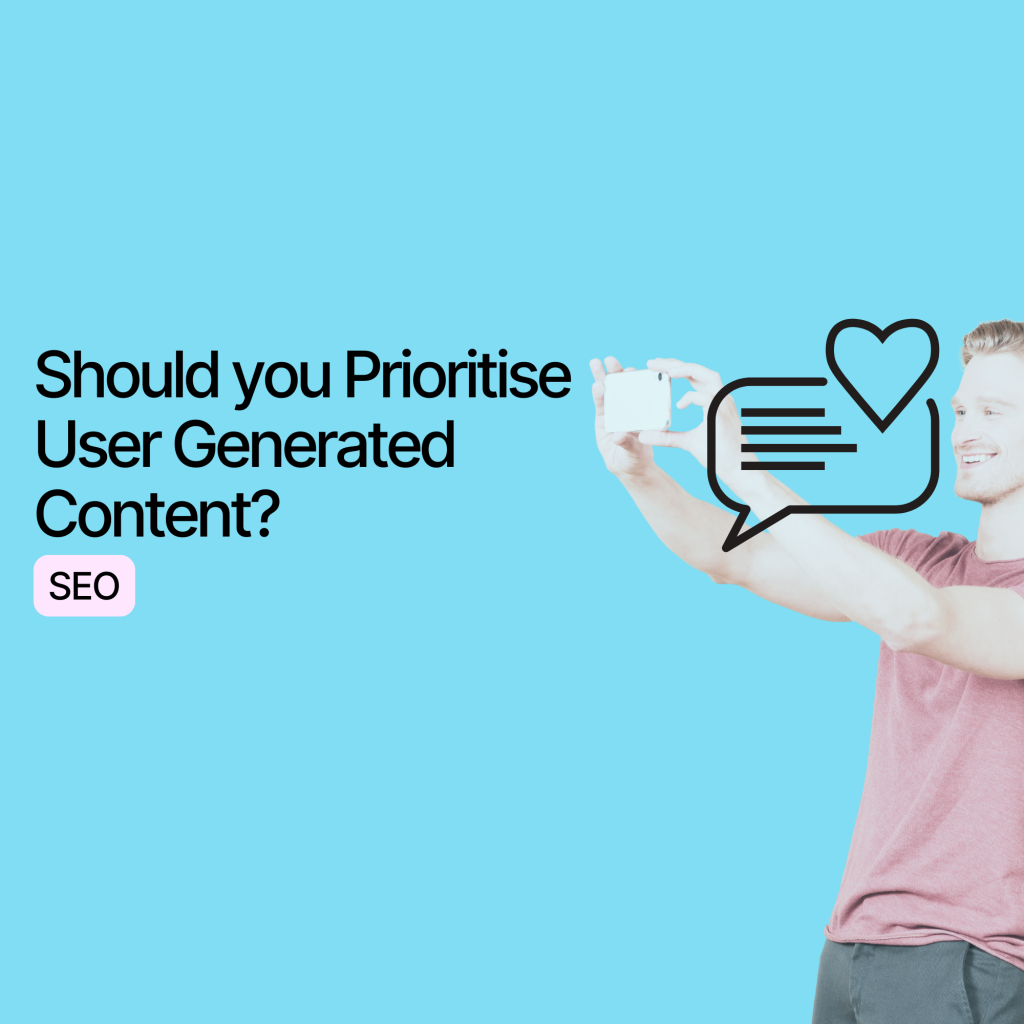With 70% of users consuming user-generated content (UGC) before making a purchase, it shows the importance of ensuring that you’re making the most of it in your marketing strategy. But what exactly is UGC, and how can you integrate it into your marketing strategy? Continue reading to find out.
What Is User-Generated Content?
User generated content is various forms of content that has been created by your customers for your brand. Generally UGC is considered authentic and valuable because it’s created by real people who have experienced your products or services firsthand.
Types Of User-Generated Content
As previously mentioned, user-generated content can come in a variety of formats, each boasting unique benefits for your brand. Here are the different types of organic UGC that we typically come across:
- Customer reviews & testimonials: These users are providing honest feedback on your products or services. This provides a sense of authenticity and trust with your brand as it shows the value of what you’re offering from a real life person.
- Social media content: Customers mention and tag your brand in their social media posts. This helps build brand awareness and reach for potential new customers.
- Photos & videos: Much like the previous points, customers share photos or videos of them using your products. Not only does this provide a visual element for your brand which is more engaging, but it also provides real life experiences which adds credibility and social proof to your brand.
- Blog posts: Although not as common, customers can sometimes write detailed experiences with your brand on their blogs. This can add to your brand’s reach, particularly if it’s a well-known blog or content creator. It can also lead to a collaboration with your brand and the content creator further down the line.
Why User-Generated Content Is Important?
Much like any marketing strategy, user-generated content can significantly impact your brand’s performance and perception online. Although we’ve already mentioned some of the benefits of UGC, let’s take a look at some other reasons why it’s important for your brand.
Authenticity
Whilst it’s easy to boast about the benefits and unique features of your brand’s products or services, there’s nothing better than hearing opinions about your brand from an external source. UGC provides credibility and trust with potential customers as it’s based on genuine experiences from real customers.
Not only does this help with the perception of your brand in the eyes of your audience, but it also aligns with E-E-A-T guidelines, which shouldn’t be ignored if you want to perform well online.
Brand Loyalty
User-generated content will typically encourage people to become brand ambassadors, especially if your brand resonates with them and their values. For example, people are more likely to promote content from ethical brands like The Body Shop that are against animal testing as opposed to cosmetic brands that aren’t as ethical.
Other than sharing common values and interests to encourage brand advocacy, you could also use loyalty schemes to encourage people to become repeat customers and show your appreciation for your customers.
Social Proof
Social proof is important when it comes to building trust and influencing decisions. By clearly including customer reviews and testimonials, people can clearly see what customers think of your offerings.
Take Peter Nyssen, for example. Below their banner image near the top of their homepage, they display a snippet of genuine customer reviews. This helps build trust and credibility in the quality of their products and services and encourages new customers to take the recommendations of real customers, increasing the likelihood that they’ll convert.

Cost-Effectiveness
User generated content relies on the creation of content from your previous customers. By encouraging users to talk about their experiences with your brand, you can create buzz around your brand, without spending much on your marketing budget.
Whether it’s through encouraging customers to share images of how they’ve reused your products packaging or creating fun community competitions, there are many ways that you can promote UGC in a cost-effective way.
How To Encourage User-Generated Content
Now that we’ve explained the importance of user-generated content, you might be wondering how you can encourage your customers to create content for your brand. After all, your customers are paying you, so why should they promote your brand too?
Although we’ve briefly touched on some of the tactics to encourage UGC, let’s take a look at some of the ways that you can create organic UGC.
- Engage your audience: By using fun competitions and asking for your audience’s opinions, you can engage with your audience and show your appreciation for them.
- Targeted marketing: Use hashtags and mentions to get your content seen by your target audience.
- Show your appreciation for UGC: When people create content to promote your business, like, comment and share the content. This not only shows your appreciation, but it also shows other customers that you value their opinions.
- Make it easy to create UGC: Providing guides and templates is an easy way to encourage UGC. This can be as simple as asking them to take a photo of their favourite product on your website, asking them to include their top benefits/features of the product.
Examples Of User-Generated Content
While there are many examples of brands that have mastered UGC, here are some of our favourites.
Coca-Cola’s "Share a Coke" Campaign
By encouraging customers to share images of their personalised bottles, Coca-Cola made a buzz around their already popular brand. Although customers didn’t have to pay extra for a bottle with their name on it, it encouraged users to share their Coca-Cola with their name, as it added a sense of achievement and personalisation when they found their name.
Users would create social media posts using the hashtags #ShareACoke #PersonalisedCoke and mention the official Coca-Cola page in the posts. As a result, the campaign generated millions of social media mentions and shares, with customers posting photos of themselves with their personalised Coke bottles.
The example that we’ve added below from Coca-Cola’s official website shows how people were posting ‘Share a Coke with Christian’ on a church board. People got creative and engaged with the hugely successful campaign worldwide.

Taylor Swift
Even if you aren’t a Taylor Swift fan, you’ve probably heard of her influence and buzz that the singer has created around her 2023/24 worldwide concert. By providing exclusive content, behind-the-scenes footage and fan interactions, she has managed to garner a huge and loyal following.
One key way that Taylor Swift has engaged with her audience is by allowing select fans to interact with the artist during her ‘Red’ performance. Her fans also use handmade friendship bracelets, which they then trade at the concert. Fans will then share these unique interactions online, creating further buzz around Taylor Swift’s brand.
How To Integrate User-Generated Content Into Your Marketing Strategy
Now that we’ve given you some examples of good user-generated content, let’s take a look at how we can help you integrate it into your marketing strategy:
- Leverage social media: Encourage your customers to share their experiences with your brand through images, videos and testimonials. Repost and share UGC on your social media accounts to showcase the loyalty and trust your customers have in your brand.
- Enhance product pages: Incorporate UGC into your product pages to provide social proof and increase customer confidence in your products or services. Display customer reviews, testimonials and images to highlight the positive experiences of your customers.
- Run UGC-specific campaigns: Create campaigns specifically focused on generating UGC. Offer contests, giveaways or opportunities to be featured on your website or social media accounts for customers who create and share UGC related to your brand. These campaigns can drive engagement and encourage customers to become brand advocates.
- Showcase UGC in marketing campaigns: Integrate UGC into your broader marketing campaigns to increase their effectiveness. Use UGC in your advertising materials, email campaigns and other promotional efforts.
- Encourage reviews and testimonials: Actively seek customer reviews and testimonials to incorporate into your marketing strategy. Display these reviews on your website, social media accounts and other marketing materials.
UGC adds authenticity, relatability and social proof to your marketing efforts, driving customer trust and engagement. By integrating UGC into your marketing strategy, you can enhance your social media presence, improve the credibility of your product pages and create engaging marketing campaigns that resonate with your target audience.
Predicted Trends In User-Generated Content
As we see changes in user behaviour and advancements in technology, we expect to see some key trends in UGC. From the impact of artificial intelligence (AI) to changes in how users generate content for brands, here are some future trends to watch out for:
- AI-driven UGC: With artificial intelligence (AI) being so much more accessible, we expect it to play a crucial role in how much UGC people might make. Will Facebook’s AI create a prompt for an automatically generated post on a recent product that the user has purchased on Meta Ads? Who knows?
- New platforms emerging: Depending on the type of products that you’re selling, it might be worth keeping up-to-date with new and emerging platforms where your customers could be posting content.
- UGC evolution: We expect to see continuous changes in UGC itself as user behaviour and technology continue to evolve. This will lead to customers being more inclined to produce more immersive content, like augmented reality (AR) experiences and 360-degree videos.
By staying ahead of these future trends and embracing new technologies, you can better stay ahead of the curve to encourage unique UGC that captures the attention and engagement of your target audience.
Ready to take your eCommerce website to the next level?
User generated content is a powerful element of marketing that can enhance authenticity, boost brand loyalty and provide social proof. When combined with your existing SEO strategy, UGC is a cost-effective way to engage audiences, making it a valuable asset in your marketing strategy.
At Proof3, our team of specialists are on hand to help you create meaningful connections with your audience and drive impactful results. If you’d like help with integrating UGC with your existing SEO strategy, drop us a line.
About the author
Henry Jones
Share this post
Read more

